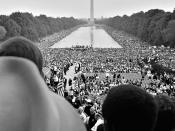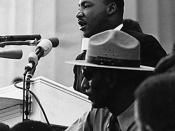Impact of McCarthyism in the United States.
According to Merriam-Webster's dictionary McCarthyism is "a mid-20th century political attitude characterized chiefly by opposition to elements held to be subversive and by the use of tactics involving personal attacks on individuals by means of widely publicized indiscriminate allegations especially on the basis of unsubstantiated charges; defamation of character or reputation through McCarthyite tactics"(Merriam-Webster, n.d.). McCarthyism began in the late 1940's and early 1950's when radicals were removed from the US society. Senator Joe McCarthy from Wisconsin pointed fingers at several political leaders accusing of being communist or associated with communism. McCarthyism successfully completed its task of separating left-wing ideas from American Society. In 1947 President Truman passed the Loyalty Act which made all government employees sign anti-communist loyalty oaths to keep their jobs. Many people were forced to go to prison during this time in which they were faced with poor conditions and abuse.
There were many areas of the American Society that McCarthyism had an affect on.
Dynamic Conservatism
Dynamic conservatism is the resistance of social systems to change. In other words people fight to stay the same. Stalemates and obstructions are key components of policy reform processes. There are various forms in which they are noticeable, from absolute resistance to secret struggles, from obstructionist activities to inspired conformity, from institutional incompetence to decision making stalemates. In spite of their dissimilar quality and effects on the policy outcome, obstructions put reform momentum at risk. Resistance to change is accompanied at the same time by plans intended at anticipating and conquering deadlocks, and preventing possible impasse as much as possible. Managing obstructions can be analyzed as a governmental activity, for the policy making process of reform is characterized by the comparable agreement of dynamism and conservatism.
Politics of Consensus
In the 1950's...


